Saturday, November 04, 2006
I woke up later than I intended, just shy of 10am. In the end I decided I liked the room, loved the view, and the difference between staying at the Vivaldi or the Melia was a matter of only a few Euros, and they threw in breakfast to boot. So instead of packing up and heading back to the Vivaldi I made my way to breakfast at the Melia instead, after having re-checked in until Tuesday at the front desk.
After breakfast I headed out to Museumsisel, or "Museum Island". A grey day, hinting at possible rain later. I was practically on top of the museum already from the hotel, and it was only a short walk before I could see a long line of tour buses lined up along the side of the street, and I could see an equally long line of people in front of the Bode Museum, with banners flying alongside proclaiming its recent re-opening.
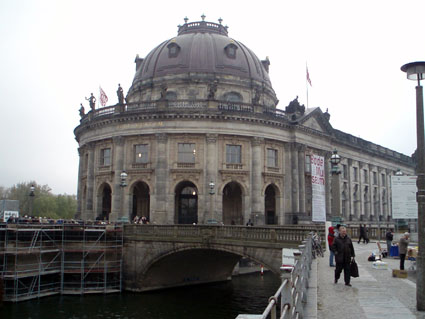
The Bode Museum
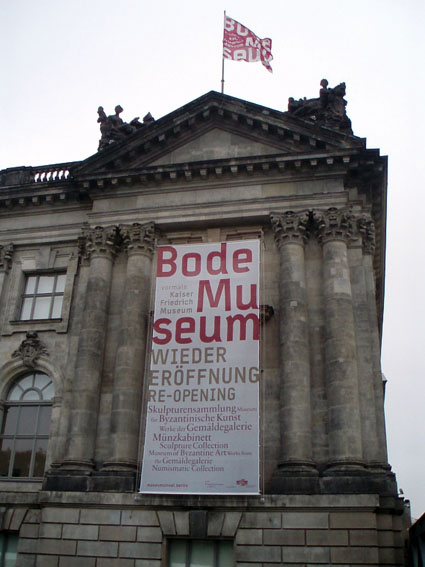
Bode Museum Banner
Upon taking a closer look at the sides of the building I could see that chunks were missing here and there, giving The Bode and the building next to it a somewhat ragged and worn look. And then I realized that they were the remnants of old bullet and bomb shrapnel "wounds" to the building, likely from WWII.
Along the way there were also a multitude of vendors who had set up stalls hugging sidewalk directly across the river from the Bode Museum. There were used booksellers, used CDs/DVDs, and endless trinkets and souvenirs from the Communist past – I was walking through what used to East Berlin after all. Medals, buttons, military hats with insignia, there was even a gas mask which some reseller had put over a red bi-valved emergency water pipe that emerged from the ground, which added an extra layer of creepiness to the whole thing. There was a small gold bust of Stalin I looked at for moment that I though would make for a good bookend, but the kitsch value was outweighed in my mind by the thought that someone might mistakenly think I somehow revered the man, so I left the hollow golden visage of the man on his table, leaving him to guard his thin metal trinkets from another era.
First stop, the Pergamon Museum. I shucked off my coat and dumped my back-pack in a small locker, since the coatrooms was full. It was a popular day to visit the museum. Bought my ticket, picked up the audio guide that was provided free, and made my way into the museum. I wasn’t prepared for what I saw next: a full recreation of an ancient Greek Temple, and friezes of battling giants and monsters, gods and goddess, all larger than life. I knew that the Pergamon Museum had a world-class set of ancient Greek and Roman sculptures, but this single room easily rivaled the size and scale of Elgin Marbles from the Parthenon currently held in the British Museum. The thing was absolutely massive, with people staggered on the rows of steps leading to the top of the temple, and all enclosed, a diffuse glow of outside light filling the entirety of the room.
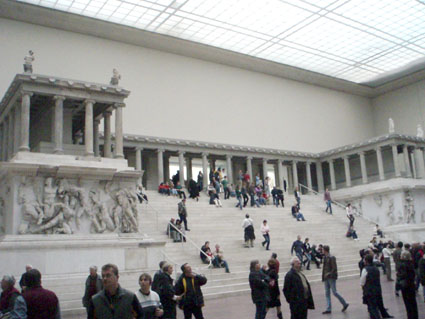
The Great Hall in the Pergamon Museum
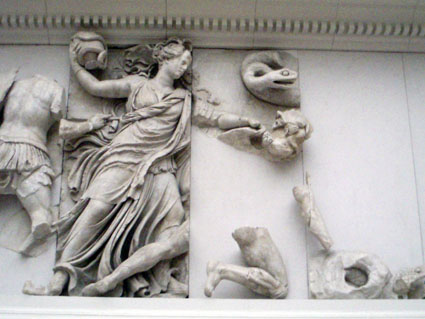
Pergamon Frieze Detail
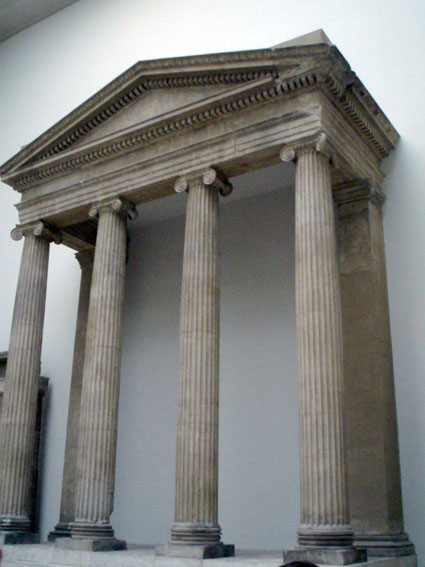
A Temple Facade
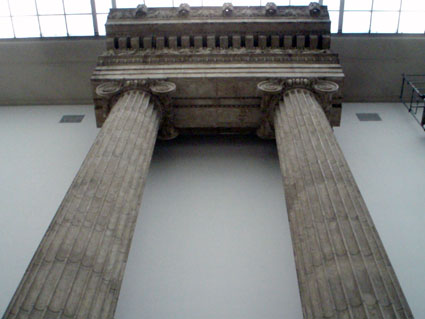
A Very Tall, Looming Façade. Sheer Height Designed to Impress
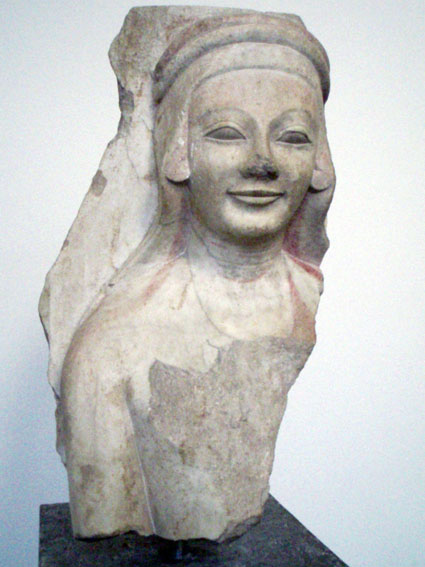
Archaic Statue of a Woman
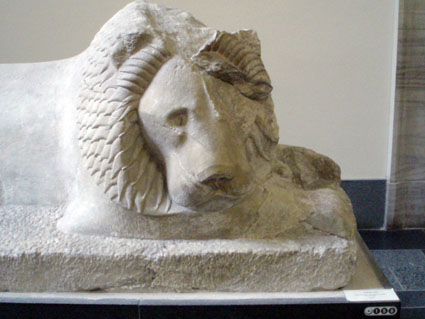
Detail of an Archaic Statue of a Resting Lion
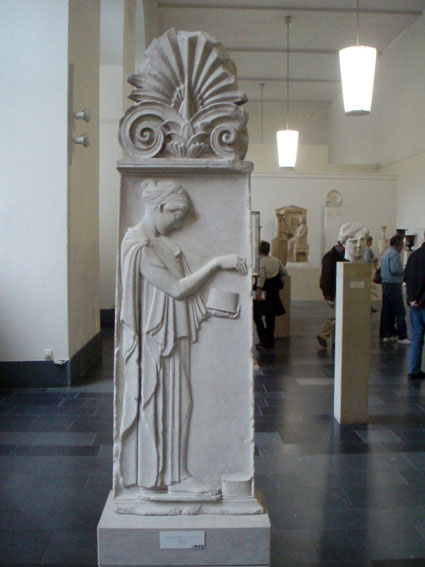
Ancient Greek Funerary Stele
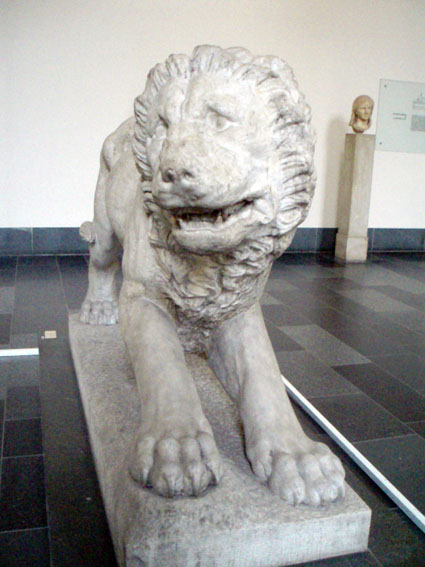
A Guardian Lion
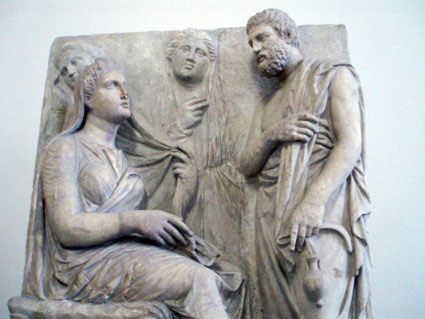
Taking Leave of His Wife in Death
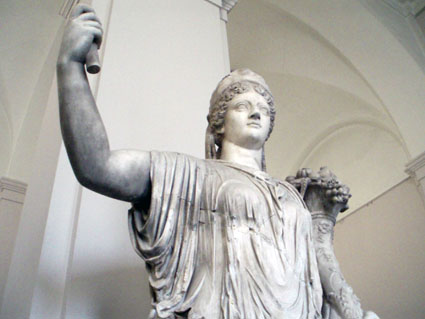
Woman Holding Cornucopia, Thought to Depict the Face of One of Julius Caesar's Daughters (Julia, if I remember correctly)
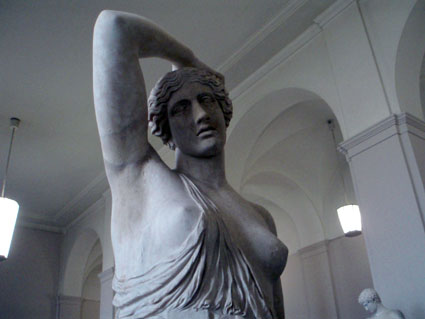
Wounded Amazon (with Three Small Droplets of Blood Trickling from her Armpit
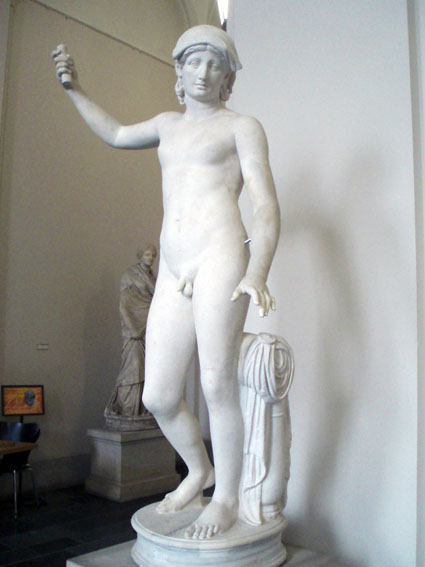
Hermaphroditus
I did a double-take when I first saw this last statue
In the next room was a section devoted to busts of Ancient Greek philosophers, and other Hellenistic sculptures, which was followed by Roman sculptures.
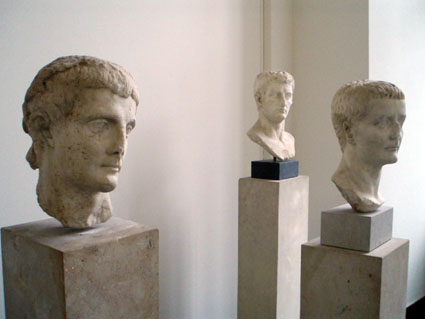
Busts of Three Julio-Claudian Emperors (Germanicus(?), Tiberius, Claudius)
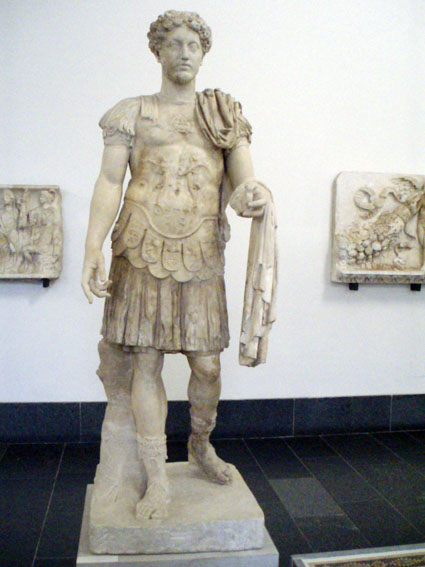
Standing Statue of Emperor Hadrian
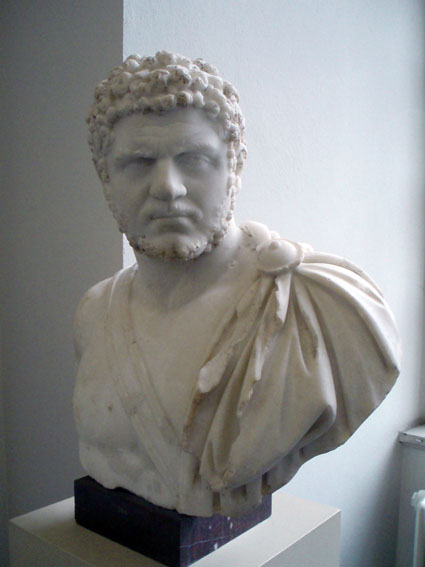
Bust of the Severe-Looking Emperor Caracalla
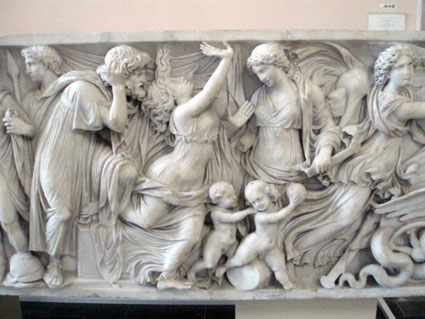
Detail from a Roman Sarcophagus
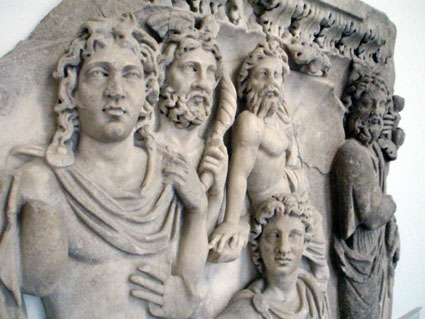
Detail from Another Roman Sarcophagus
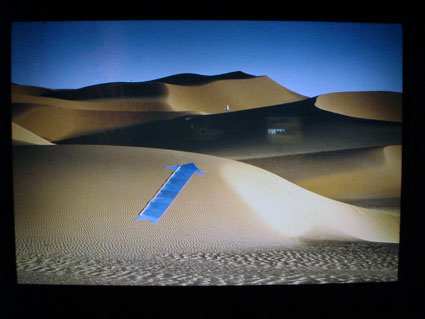
Heinz Mack: From a Set of Desert Installations
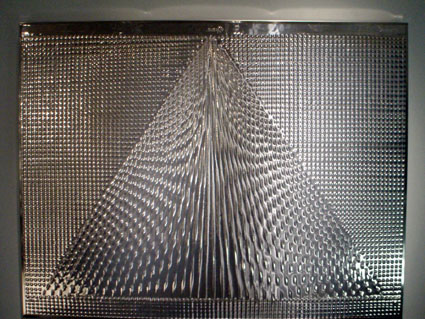
Heinz Mack: A Metallic Wall Display
A painting of a well-known optical illusion:
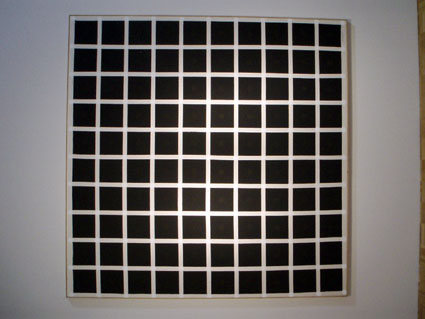
Heinz Mack: "Cinetic Painting"
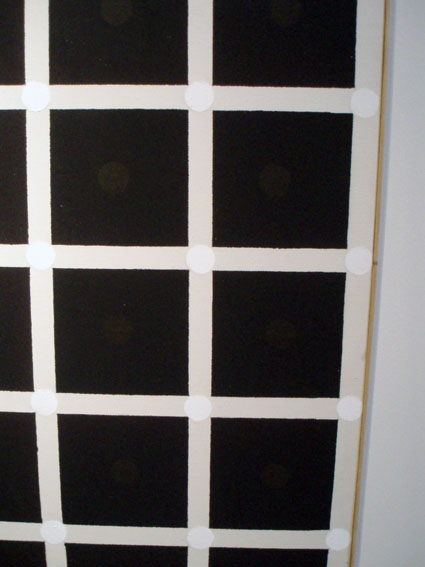
Heinz Mack: "Cinetic Painting" - Detail
He had painted small white spots in the interstices of the white lines. And still that part of our visual perception that enhances contrasts still makes darks spots appear in the junctions where none exist.
After this I had to backtrack my way through the previous galleries in order to make my way over to the other side of the building. This is where I ran into the other impressive large-scale display, which is a recreation of the Gate of Ishtar.
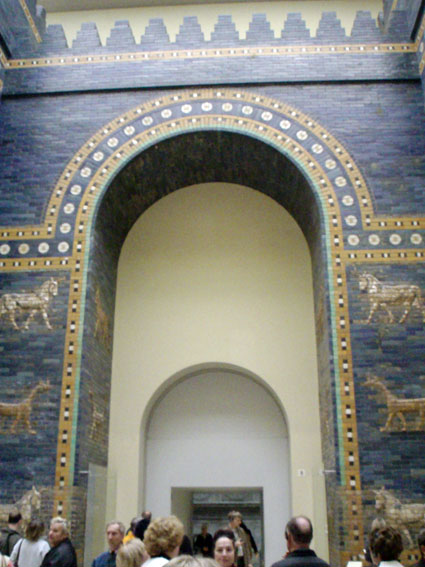
Gate of Ishtar: Looking Back at the Entrance
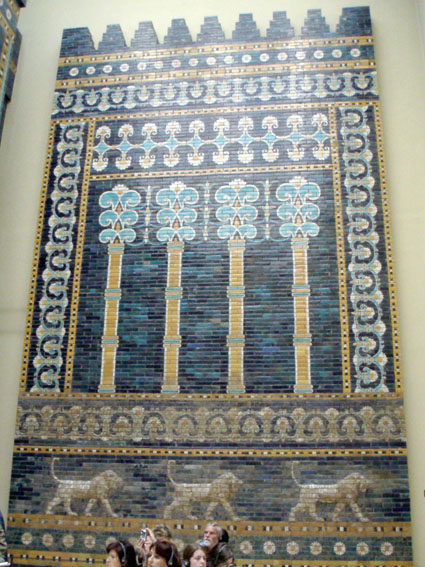
A "Side Gate" of the Gate of Ishtar (notice everyone looking towards the entrance to the Main Gate, which also gives a sense of scale)
Almost without exception, everyone was looking up, impressed by the sheer scale of the gate, and honestly my camera was not up to the task of taking a picture of something so large in an enclosed space. This was the entrance to the Assyrian section of the museum. Here are some of the highlights I was able to capture:
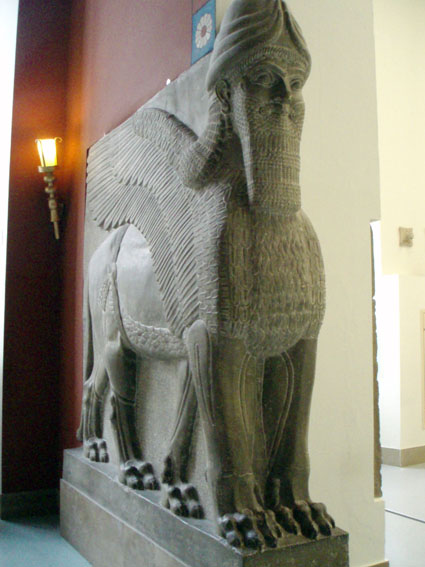
A Guardian Griffin
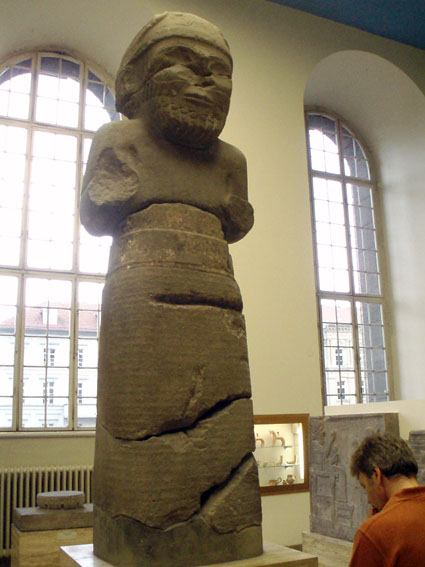
A Colossal Statue of the Weather God Hadad"
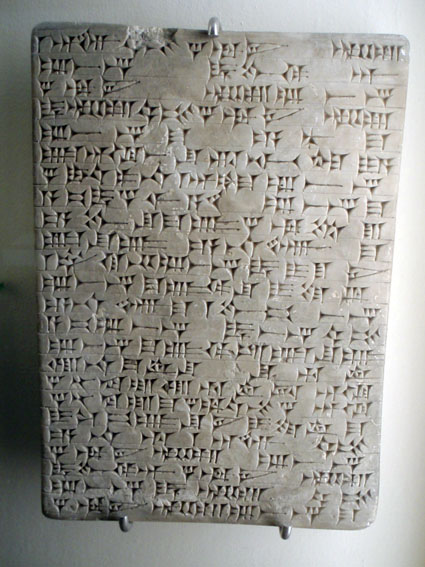
A Cuneiform Tablet
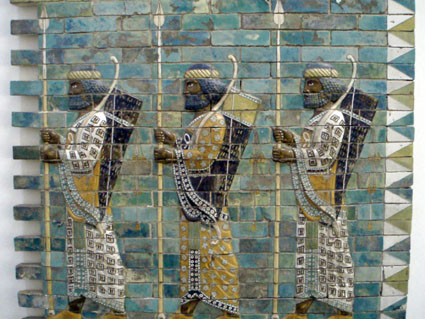
Relief of the Royal Bodyguard
On the whole though, I found I wasn't as captivated by this section of the museum as I was with the Ancient Greek wings. Admittedly my grasp of its history is weaker, but with few exceptions the works are designed to impress rather than to evoke sympathy or any emotional or sympathetic response, so I found most of the pieces cold and impassive when compared to the Greek pieces.
At this point, the battery in my camera was beginning to fail, and in all I managed to take over 400 pictures with my camera. Not bad for a single battery (no flash). My own "batteries" were also beginning to fail at this point, as I had been in the Pergamon for just shy of four hours at this point. There was still a wing on Islamic art that I decided to bypass, as well as the section at the top of the stairs of the Pergamon altar. And so I left in order to recharge the battery of my camera and get some food. The Altes Museum ("Old Museum"), which is the current exhibition hall for the Egyptian Museum, was my next target for the day.
Labels: Ancient Greece, Ancient Rome, Berlin, camera, Communist, Gate of Ishtar, Hadrian, Heinz Mack, Julio-Claudian, Pergamon Museum, philosophers, sarcophagus
Subscribe to Posts [Atom]
